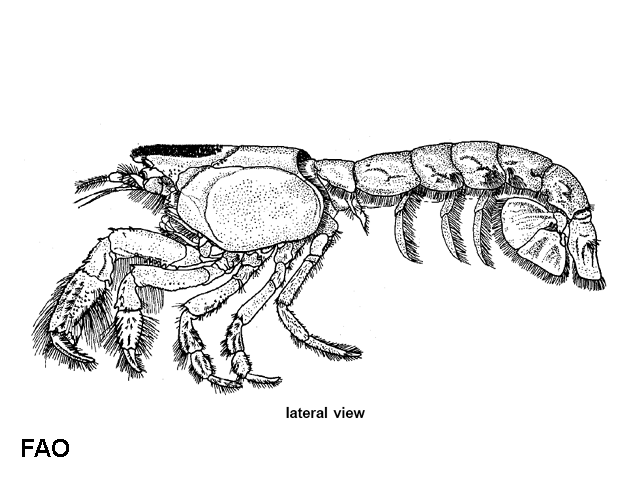| Upogebiidae (mud shrimps) |
| 9.5 cm BL (male/unsexed) |
|
benthic; brackish; marine |
| Northwest Pacific: S.E. coast of Siberia, USSR, from Olga Bay southward, Korea, N. China, Kuril Islands, Japan. |
|
Rostrum ending in 3 teeth, the lateral at the end of a ridge that is separated from the central part of the rostrum by a deep groove; a shallow median longitudinal groove is present in the central part. The lower surface of the rostrum has no spines. Anterolateral border of carapace with a single spine at the level of the eye. First pereiopods subchelate. Dactylus of adult male with 9 to 11 oblique ridges on the outer surface, and with a low tooth in the proximal half of the cutting edge. Two denticulate ridges on the upper surface of the palm. Merus of the first pereiopod with a distinct subdistal anterodorsal spine; coxa of that leg with a spine (Ref. 4). |
| It has a maximum total body length of 9.5 cm (Ref. 4). It is found in tidal mud flats and it makes Y-shaped burrows in the mud and are filter feeders (Ref. 4). |
|
Not Evaluated (N.E.) Ref. 123251)
|
|
|
Source and more info: www.sealifebase.org. For personal, classroom, and other internal use only. Not for publication.

